Decisions, decisions.

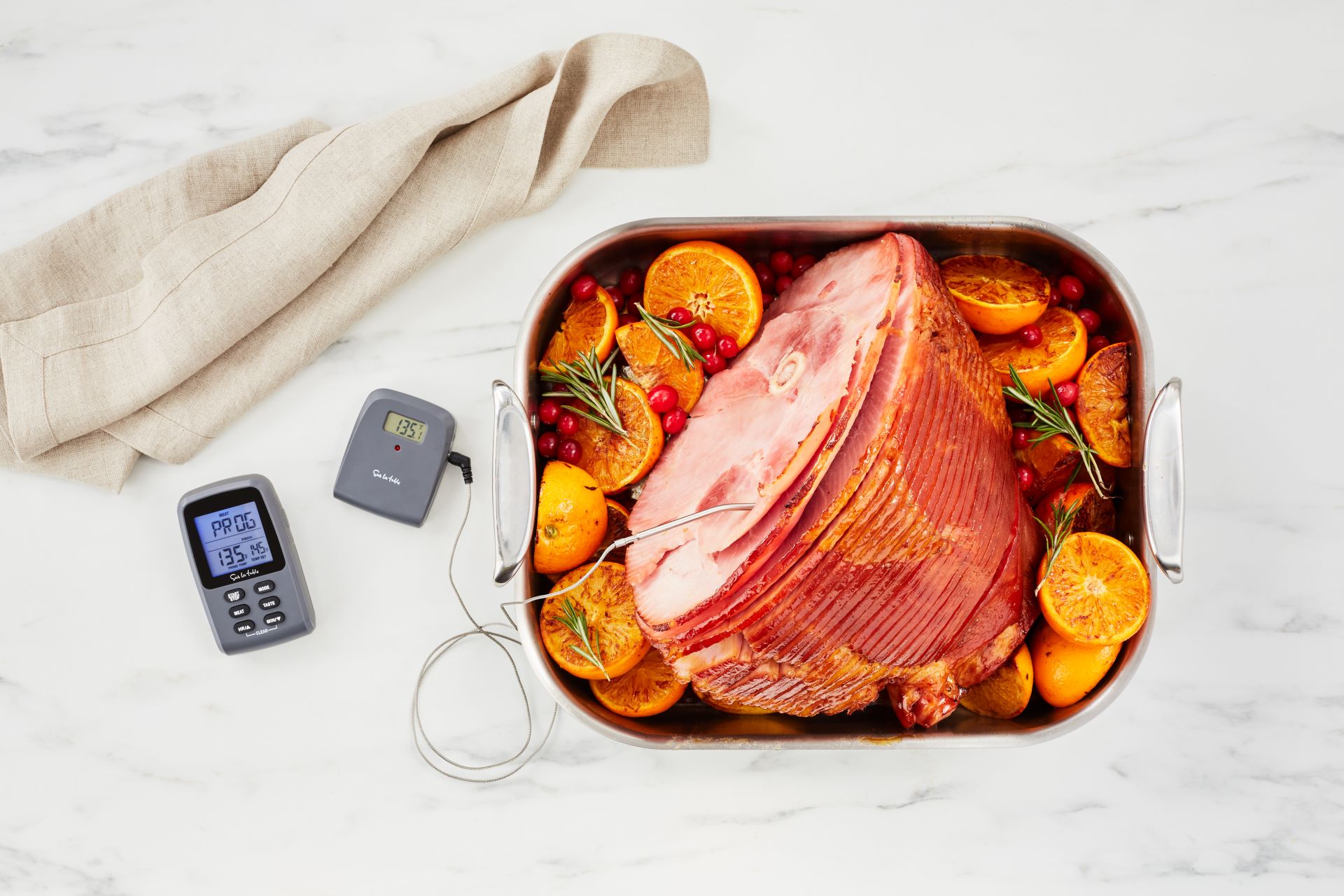
If you have any carnivores in your kitchen, one of the most essential cooking tools you can buy is a meat thermometer.
While some people think that they don’t need them and prefer to cook by feel or time, cooking meat to perfection requires precision and accuracy in temperature control. And properly cooked meat not only ensures a delicious and enjoyable meal, but also plays a crucial role in preventing foodborne illnesses (this is particularly true for poultry!).
This Father’s Day, give Dad the gift he’s really been craving—whether he’s a wiz in the kitchen, a master mixologist or the best burger flipper around, there’s something special for every dad.

A meat thermometer is an indispensable tool in the kitchen, offering a wide range of benefits for both professional chefs and home cooks. Some of the key advantages of using a meat thermometer include:
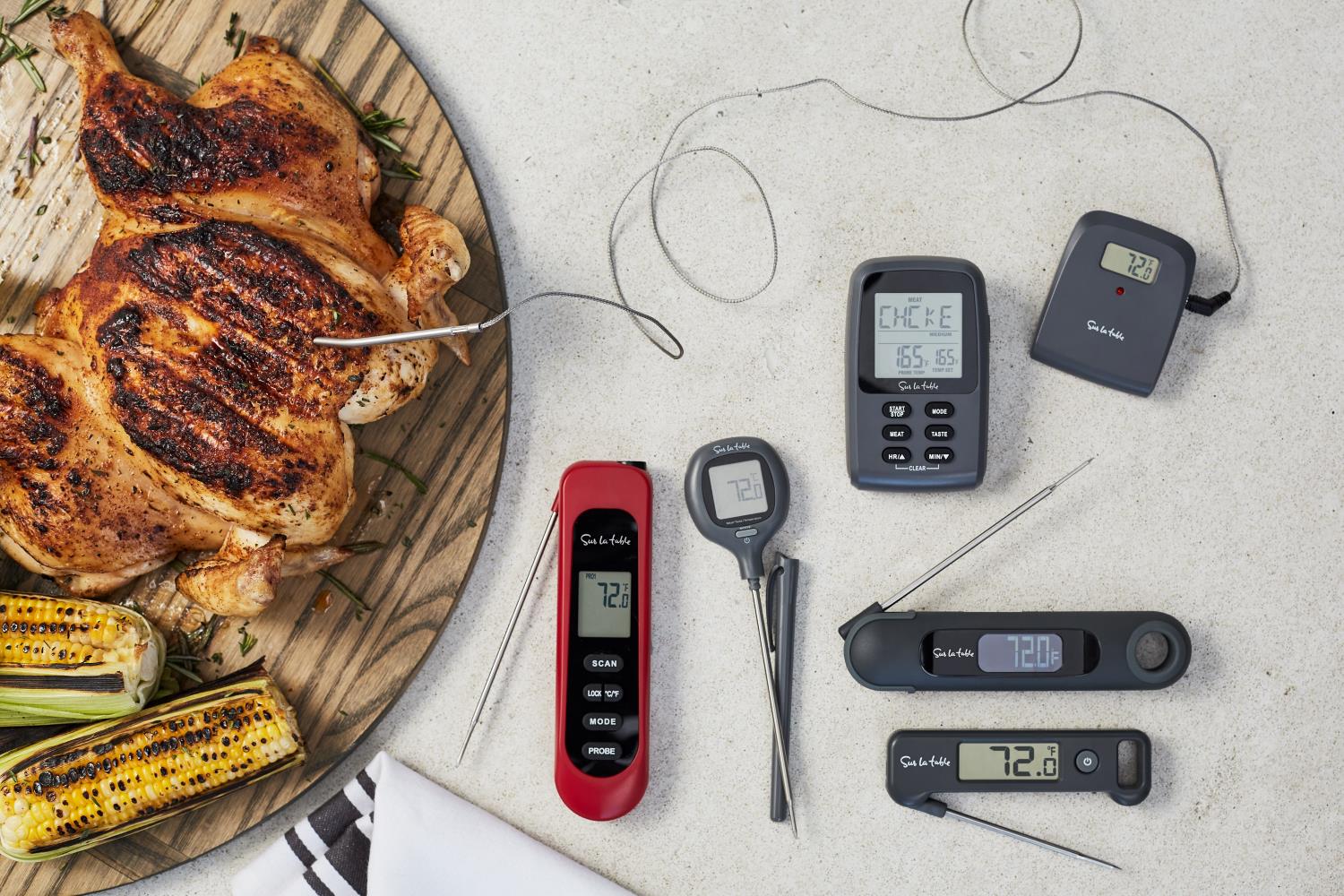
Meat thermometers come in various types, each offering unique features and benefits. There are three main types of meat thermometers: digital, analog and leave-in.
Digital meat thermometers have gained popularity due to their accuracy, speed and ease of use. These thermometers utilize electronic sensors to measure the internal temperature of the meat and display it digitally. Digital thermometers are available in two main styles:
Analog meat thermometers, also known as dial or bimetallic thermometers, have been a traditional choice for many cooks.
They consist of a metal stem with a dial display indicating the temperature. To use an analog thermometer, you insert the probe into the meat, and the dial gradually moves to show the internal temperature. While analog thermometers may take slightly longer to display the temperature compared to digital models, they are generally reliable and do not require batteries.
Leave-in meat thermometers, also called oven-safe or remote thermometers, are designed to be inserted into the meat before cooking and remain in place throughout the cooking process.
These thermometers have a probe connected to a base unit or display unit with a cable. The base unit can be placed outside the oven or grill, allowing you to monitor the temperature without opening the cooking appliance. Leave-in thermometers are ideal for dishes with long cooking times, such as roasts or slow-cooked dishes, as they provide continuous temperature monitoring without the need for frequent manual checks.
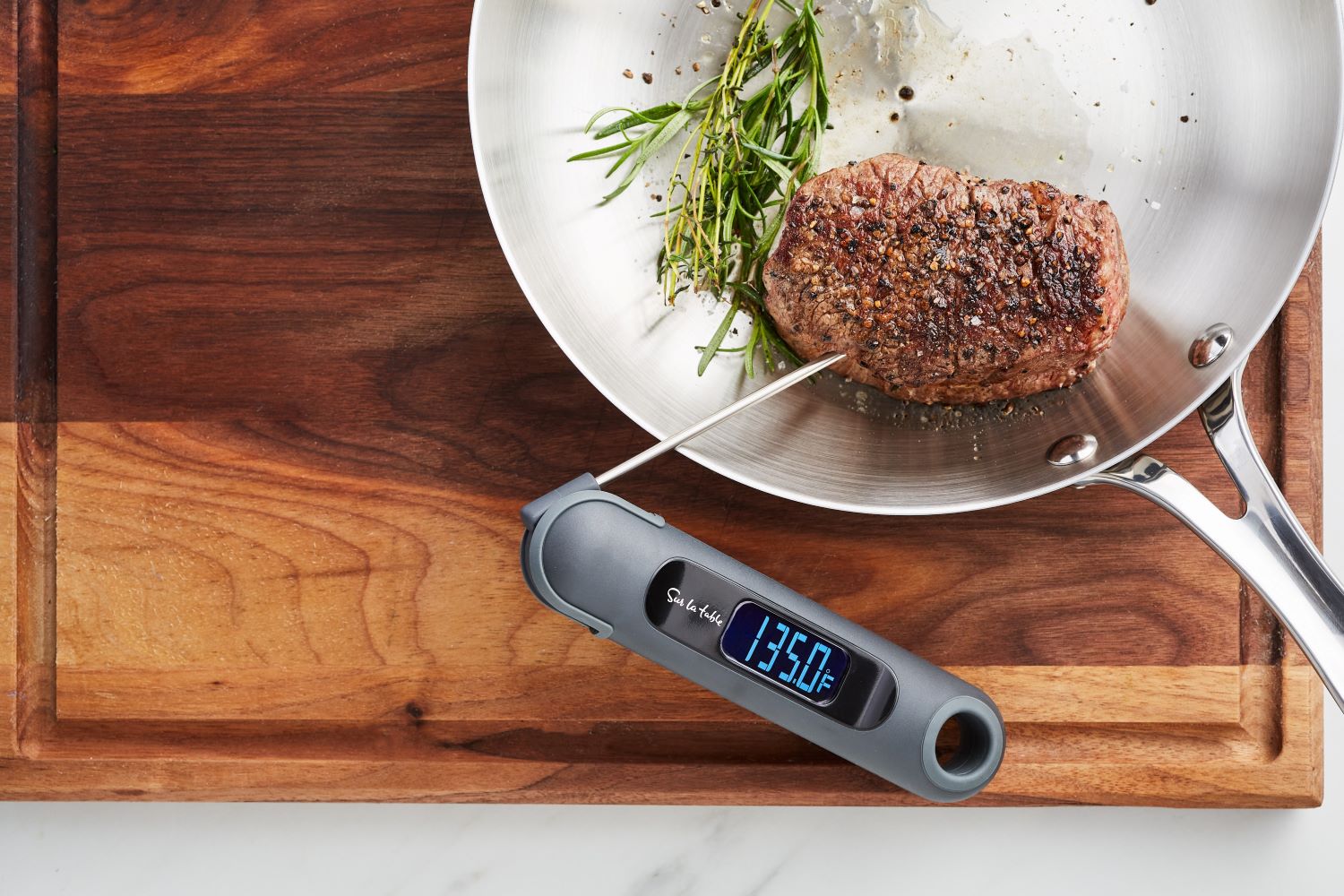
Each type of meat thermometer has its advantages and considerations, so it’s important to choose the one that best suits your needs and preferences.
Digital thermometers offer quick and accurate readings, analog thermometers are reliable and straightforward to use and leave-in thermometers provide convenience for long cooking processes. When looking to buy the best meat thermometer for your needs, consider things like speed, accuracy, convenience and the type of cooking you frequently engage in.
Here’s a quick list of the pros and cons of each type of meat thermometer:
Pros
Cons
Pros
Cons
Pros
Cons
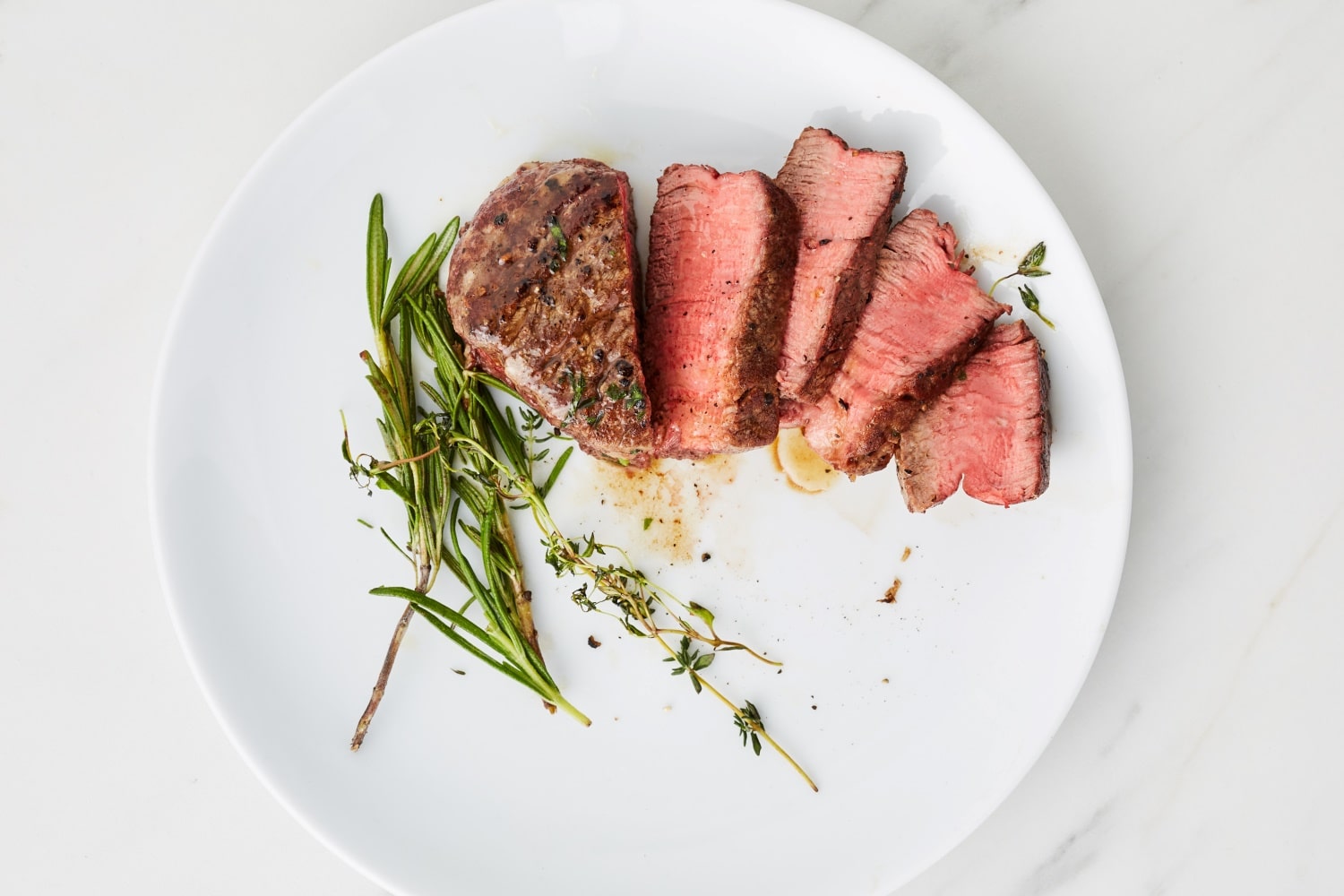
Everyone has different preferences when it comes to meat doneness. By using a meat thermometer, you can cook meat to the exact level of doneness you desire, whether it’s rare, medium-rare, medium, medium-well or well-done.
By accurately monitoring the meat’s internal temperature, you can remove it from the heat source at the ideal moment, preventing it from becoming overcooked. This helps retain the natural moisture in the meat, resulting in a juicier and more flavorful end result.
Here’s a list of internal temperature ranges you’ll want to know the next time you’re cooking your favorite protein:
Beef:
Poultry:
Pork:
Ground Meats (Beef, Pork, Lamb or Veal):
Ground Meats: 160°F (71°C) for safety reasons, as bacteria can be present throughout the meat.
Fish and Seafood: 145°F (63°C) or until the flesh is opaque and flakes easily with a fork.
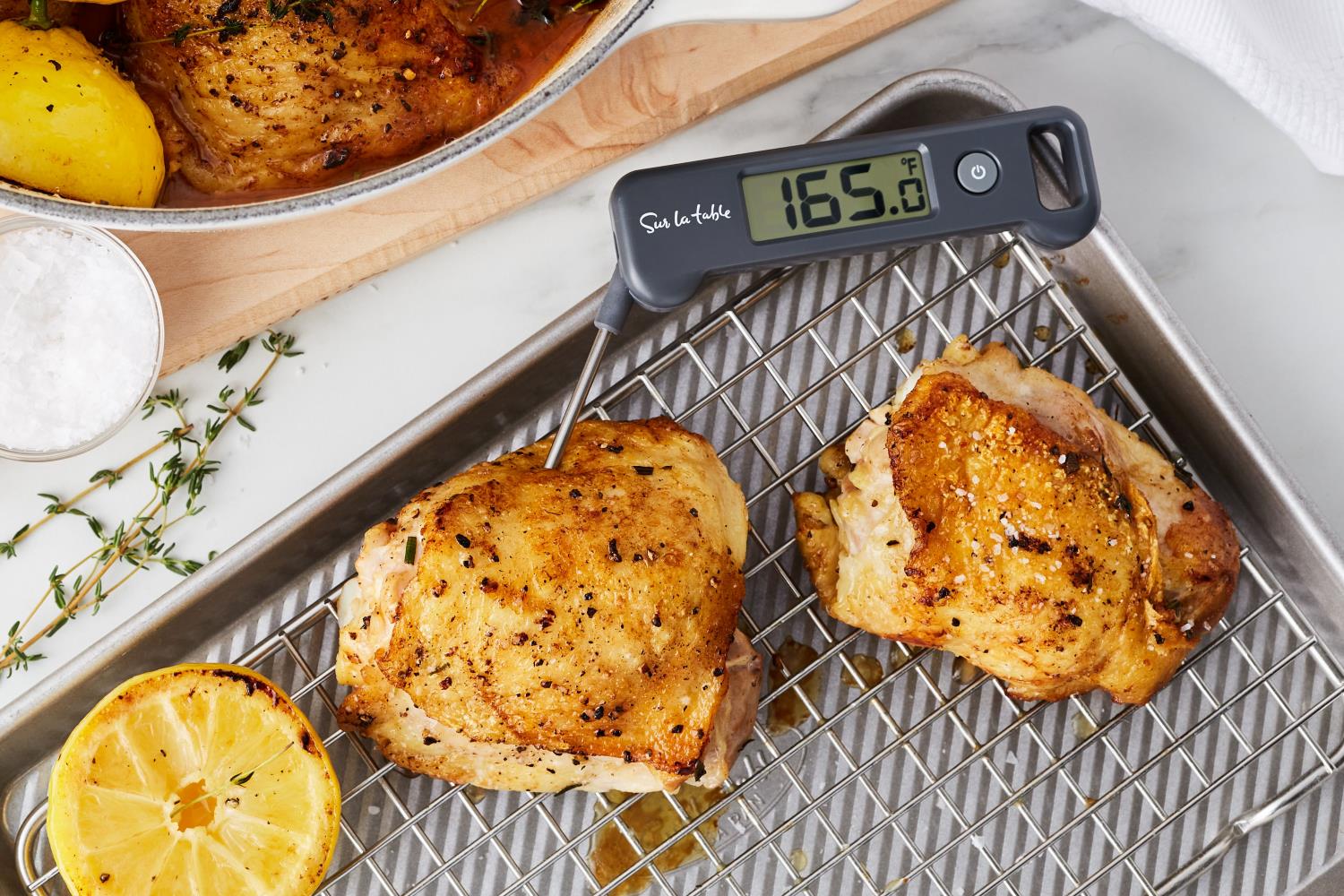
Selecting the right meat thermometer can greatly improve your cooking experience and ensure your food comes out exactly as you like it, every time. Here are some factors to consider when choosing the best meat thermometer for your specific needs:
This Father’s Day, give Dad the gift he’s really been craving—whether he’s a wiz in the kitchen, a master mixologist or the best burger flipper around, there’s something special for every dad.
JOIN THE CONVERSATION